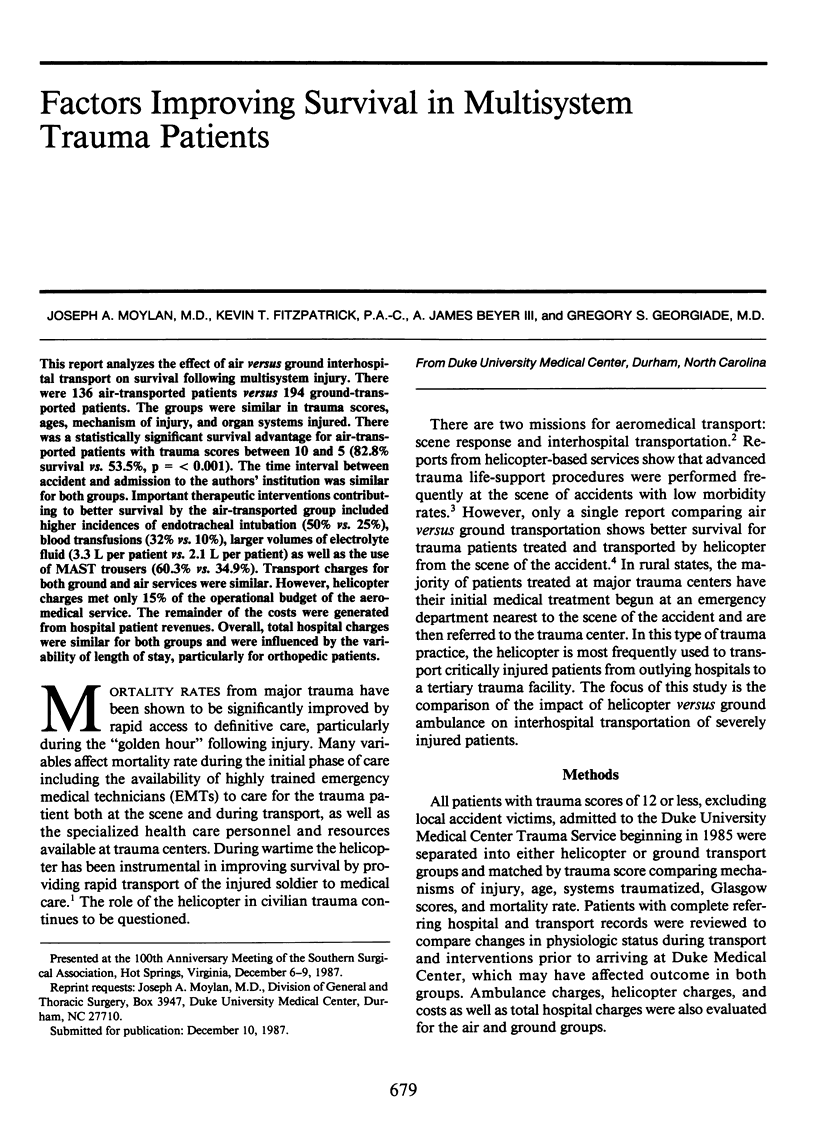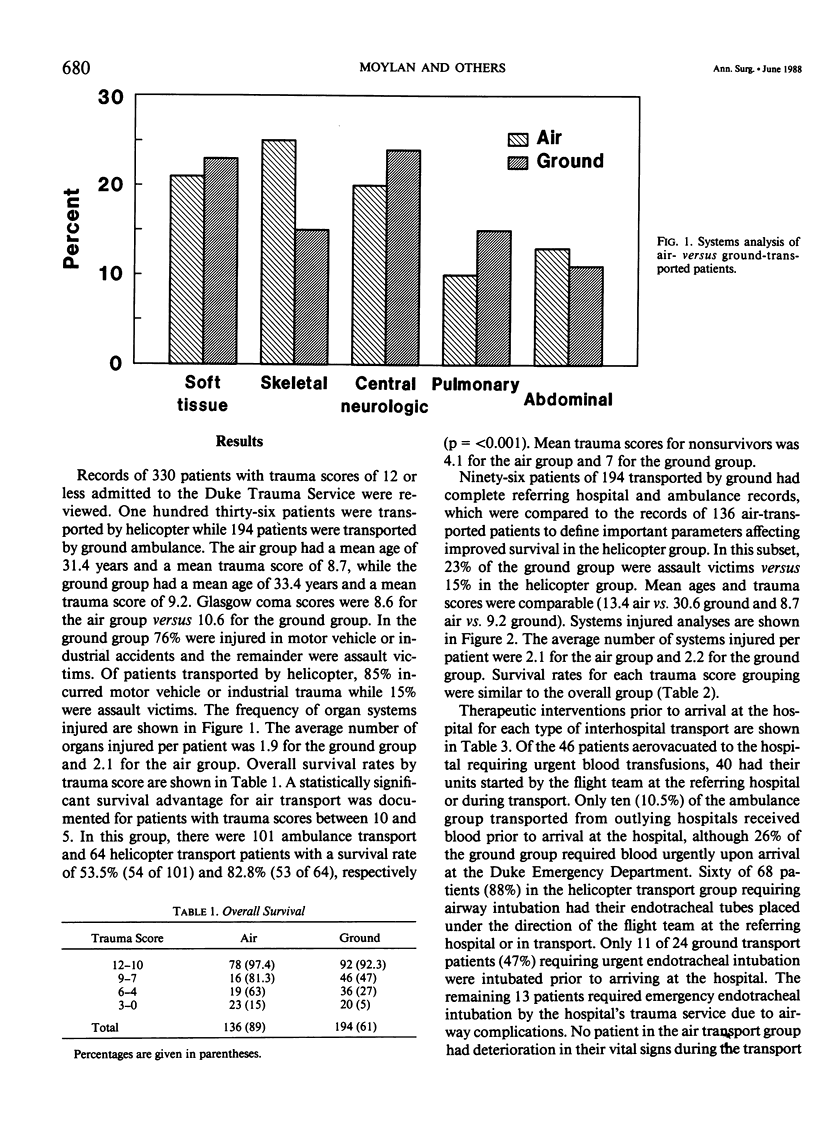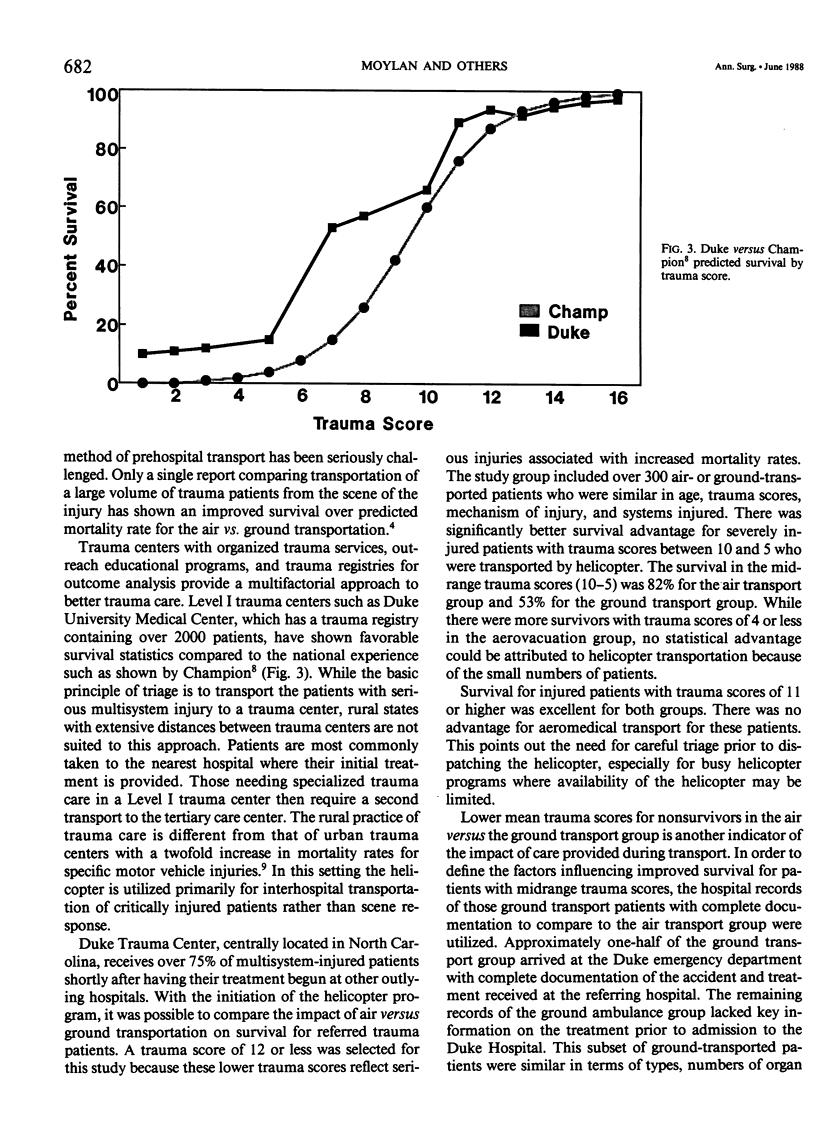Abstract
This report analyzes the effect of air versus ground interhospital transport on survival following multisystem injury. There were 136 air-transported patients versus 194 ground-transported patients. The groups were similar in trauma scores, ages, mechanism of injury, and organ systems injured. There was a statistically significant survival advantage for air-transported patients with trauma scores between 10 and 5 (82.8% survival vs. 53.5%, p = less than 0.001). The time interval between accident and admission to the authors' institution was similar for both groups. Important therapeutic interventions contributing to better survival by the air-transported group included higher incidences of endotracheal intubation (50% vs. 25%), blood transfusions (32% vs. 10%), larger volumes of electrolyte fluid (3.3 L per patient vs. 2.1 L per patient) as well as the use of MAST trousers (60.3% vs. 34.9%). Transport charges for both ground and air services were similar. However, helicopter charges met only 15% of the operational budget of the aeromedical service. The remainder of the costs were generated from hospital patient revenues. Overall, total hospital charges were similar for both groups and were influenced by the variability of length of stay, particularly for orthopedic patients.
Full text
PDF




Images in this article
Selected References
These references are in PubMed. This may not be the complete list of references from this article.
- Alexander R. H., Pons P. T., Krischer J., Hunt P. The effect of advanced life support and sophisticated hospital systems on motor vehicle mortality. J Trauma. 1984 Jun;24(6):486–490. doi: 10.1097/00005373-198406000-00005. [DOI] [PubMed] [Google Scholar]
- Baxt W. G., Moody P. The impact of a rotorcraft aeromedical emergency care service on trauma mortality. JAMA. 1983 Jun 10;249(22):3047–3051. [PubMed] [Google Scholar]
- Boyd D. R., Mains K. D., Flashner B. A. A systems approach to statewide emergency medical care. J Trauma. 1973 Apr;13(4):276–284. doi: 10.1097/00005373-197304000-00002. [DOI] [PubMed] [Google Scholar]
- Funsch H. F., Nareff M. J., Watkins P. B. Wings for wounded warriors. JAMA. 1967 May 1;200(5):391–398. [PubMed] [Google Scholar]
- Moylan J. A., Jr, Pruitt B. A., Jr Aeromedical transportation. JAMA. 1973 May 28;224(9):1271–1273. [PubMed] [Google Scholar]
- Thomas F., Clemmer T. P., Orme J. F., Jr A survey of advanced trauma life support procedures being performed by physicians and nurses used on hospital aeromedical evacuation services. Aviat Space Environ Med. 1985 Dec;56(12):1213–1215. [PubMed] [Google Scholar]



